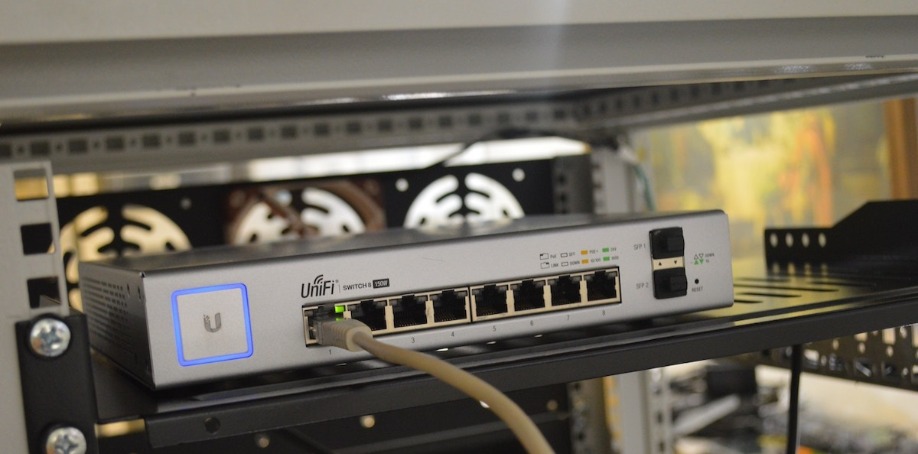
When you're an AV or IT manager, it's important that you can sell a convincing business case for major AV and IT upgrades.
AV over IP technology isn't exactly new, but it became a serious trend in 2018. Research by Futuresource Consultingshows that sales of AV over IP products are increasing at 130 percent year over year.
You probably understand why you need to upgrade to AV over IP. Still, saying that AV over IP is the next big thing isn't enough. If you're serious about bringing your company's AV into the realm of IT, you must make the business benefits abundantly clear.
To sell executives on the need to upgrade to AV over IP, think competition, cost-savings, security and strategy.
You're Already Behind the Competition
Executives don't want to hear that they're well behind the competition. After all, it's their job to secure the company's long-term success. But that's the reality of companies that aren't already integrating AV and IT. Making this clear to executives should be your first step.
At the 2017 Total Tech Summit in Orlando, Jay McArdle, CIO for Zdi, was more than frank. “If you're just hearing about it now, you're in a really bad spot,” he said. “If you don't understand IP networks, do us all a favor and sell your business now.”
That was in 2017. The need for AV over IP in 2019 and beyond is even more pressing.
Anthony Brennan, research analyst at Futuresource Consulting, says that the impact of AV over IP cannot be stressed enough.
“We're seeing the beginnings of a trend that will shake up the industry, with our forecasts pointing to a volume CAGR of nearly 50 percent during the next five years. Make no mistake, AV over IP will transform the way the pro AV market interacts with and controls AV systems.”
Whether you're in healthcare, construction, the military or education, find examples of companies that are succeeding with AV over IP and make them a big part of your pitch.
Free Presentations on the ISE 2019 Main Stage
New for the 2019 conference is the main stage, a custom-designed stage centrally located in Hall Eight. It will host educational presentations from AVIXA, CEDIA, ISE and AV Magazine from Tuesday through Friday. These free talks offer something for everyone.
AVIXA will run a number of sessions that will use shortlisted entries from the AV Awards 2018 to demonstrate how the latest integrated experiences are designed, created and installed across a number of markets.
CEDIA is partnering with tech integrators who won a 2018 EMEA CEDIA Award to discuss their award-winning projects in a series of 20-minute sessions. Each award winner will discuss the challenges they faced and the steps they took to overcome them.
AV Magazine's editorial team, led by editor Clive Couldwell, will be hosting neutral panel debates, presentations, case studies and Q&As covering issues crucial to the success of AV vendors, products and businesses.
Smart Building Conference Chair Bob Snyder will be curating presentations and discussions with leading industry figures. Some of the key industry issues and trends will be discussed during the ISE main stage sessions.
Sell Scalability and Cost Savings
Executives may not immediately understand the more technical aspects of AV over IP, but there is one thing they will grasp: cost savings. That's why the financial benefits of AV over IP should be one of your key selling points.
Explain that traditional AV solutions are fraught with problems. Executives should know that they are incredibly inflexible, fail to scale and can be incredibly expensive to upgrade.
For example, Liberty AV Solutions explains that filling up the traditional AV matrix switch has always been an issue for integrators. A full switch leaves no flexibility for growth if new sources or displays are added to the system. Enterprises are forced into buying and integrating larger and more expensive switches to solve the problem.
But that's not the case with AV over IP. The only thing that needs to be added when upgrading your AV solution is new screens and new Ethernet switches — both of which are cheap to purchase and install. Even implementing AV over IP doesn't typically require new cable installation.
Ford AV's Daniel Routman believes that AV over IP is not only a case of increased scalability. It's also a case of future-proofing your AV solution. Network switches are here to stay. In fact, much of the infrastructure that businesses have in place today is going to be here for a long time. This includes the network jacks that are in the walls. With AV over IP, businesses can leverage technology that's already in place. If a replacement for HDMI cables is introduced in the future, it's simply a matter of replacing your encoders and nothing else.
Paul Harris, CEO of Aurora Multimedia, thinks that AV over IP will come to dominate the industry. “10G AV over IP will be the future of audiovisual for years to come and once application-specific integrated circuit (ASIC) versions of this technology are made available, the prices will fall further and capabilities will expand,” Harris writes.
The question to executives is simple: Do you want to decrease costs and future-proof your business, or pay for expensive and redundant AV upgrades?

Improved Distance, Quality and Content Capabilities
Cost savings through increased scalability may be the most important benefit of AV over IP, but it's not the only one that executives should be made aware of. Improved image quality, streaming distance and content capabilities can all be huge selling points depending on your company and industry.
IVC Technologies' Polly Tyekiff notes that video quality significantly improves when AV over IP is used.
“IP allows a lot more data to be passed over a single cable which means the quality of the audio and video signals will be much better. It's now possible to transmit HD and Ultra HD signals through IP-based products too, as well as VOIP.”
Polina Bunner of VSSi agrees. She explains that traditional AV is often limited by distance because it can be expensive to extend it just a few feet. But because AV over IP is transmitted by a single fiber optic cable, it can inexpensively cover great distances.
What you're transmitting can also be completely transformed by AV over IP says Western Audio Video. AV over IP offers an endless number of signals, which means that you can stream dynamic information such as live video, images and text all at the same time.
Address Questions About Security
When you're making substantial upgrades to both AV and IT, there are always going to be questions raised about security. It's important to address these questions head-on and to bust any myths as soon as they arise.
HB Communicatio's Andy Hammer notes that some people mistakenly believe that moving from hardwired AV to AV over IP increases security risks. But that's simply not the case. Thanks to advances in encryption and digital key exchange technology, AV over IP poses no greater risk than traditional solutions.
It doesn't increase the risk to your existing network infrastructures either, says Matrox.
“AV-over-IP implementations, whether on separate or existing infrastructure, can be done without compromising the IT network security. In many organizations, the ability to use data, communications, and AV together (also known as “convergence”) is a driving force and key benefit for how AV is being re-fitted or newly deployed.”
You know that AV over IP poses no great risk to your company's security, but make sure your executives know that, too.

Have a Strategy Ready
Executives don't want questions or problems, they want solutions. That's why, as well as making the case for AV over IP, you also need to show that you have a strategy ready when it comes to implementation.
According to Marathon's Manesh Kalidas, the No. 1 priority for successful AV over IP deployments is the network infrastructure. To build the right infrastructure, you need to know what the demands are likely to be on it now and in the future. 1080p or 4k media? Live presentations or recorded content? Understand your company's needs and tailor your strategy accordingly.
When creating an AV over IP strategy, there are three key factors to consider: low bandwidth, low latency and high AV quality. Justin Kennington, president of the SDVoE Alliance, recommends that you only focus on two.
Low compression provides the lowest latency and highest AV quality, but it requires the highest bandwidth. Low network loads can reduce bandwidth but may increase latency and reduce image quality. It's a balancing act and one that you need to consider carefully when planning your network.
Don't rush when selling executives on the need for AV over IP. You may only have one chance this year to successfully make your case for upgrading and integrating your AV solution with IT. So make the benefits of AV over IP clear, show that your company's position in the market is at risk, and demonstrate your strategy in order to succeed.
Images by: Benjamin Child, Thomas Jensen, Sam McGhee


